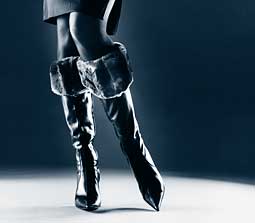A huge branch of the economy
-
Fur market (turnover) in 2012: Never before has the demand for fur been so pronounced. The International Fur Trade Federation, IFTF, indicated the sales worth of fur clothing, including trimmings and accessories, for the year 2012 as amounting to US $ 15.6 billion, which corresponds to an increase of 4 % in comparison to the preceding year (2011: US $ 15 billion). Since the 2000/2001 season, sales figures worldwide have increased by 70%! This increase is to be led back primarily to the Asian markets in China, Hongkong and Korea where demand is great. Simultaneously, record prices were achieved at auctions in Europe and North America. Source: German Fur Institution 2013.
Far more than 65 million animals are killed annually for fur alone. The most frequently killed fur animals alone, foxes and minks, account 2011 for over 57 million. In addition to this, hundreds of thousands of dogs, cats, beavers, chinchillas, raccoon dogs, and rabbits, etc. are also killed every year.
In the past ten years, worldwide fur production has increased by 44%.
Fur trimmings are not a byproduct of the fur coat production; animals are bred and killed for trimmings alone.
Approximately 90% of farm-bred fox furs are used to manufacture accessories and fur trimmings.
80–85% of the furs traded today were produced on industrial fur farms, the rest comes from hunting and trapping. The U.S., Russia and Canada are the world’s most important wild animal fur-producing nations.
The most important fur farm nations today are: China, Denmark*, Russia, Finland, the U.S., the Netherlands**, Norway, and Poland.
(* On May 29, 2009, the Danish Parliament decided to permit the breeding of foxes for fur production no longer than the year 2023 after which a production stop will be implemented for ethical reasons. **On December 18, 2012, the Dutch Senate prohibited the production of mink furs for ethical reasons. This prohibition will enter into force as of 2024. The breeding of other fur animals has been forbidden in the Netherlands since 2008).
In 2011, the European Fur Lobby moved its headquarters to Brussels in order to be able to exert greater political influence. The International Fur Trade Federation (IFTF) shares offices with the European Fur Breeders’ Association (EFBA) and both very actively defend the interests of the fur industry.

